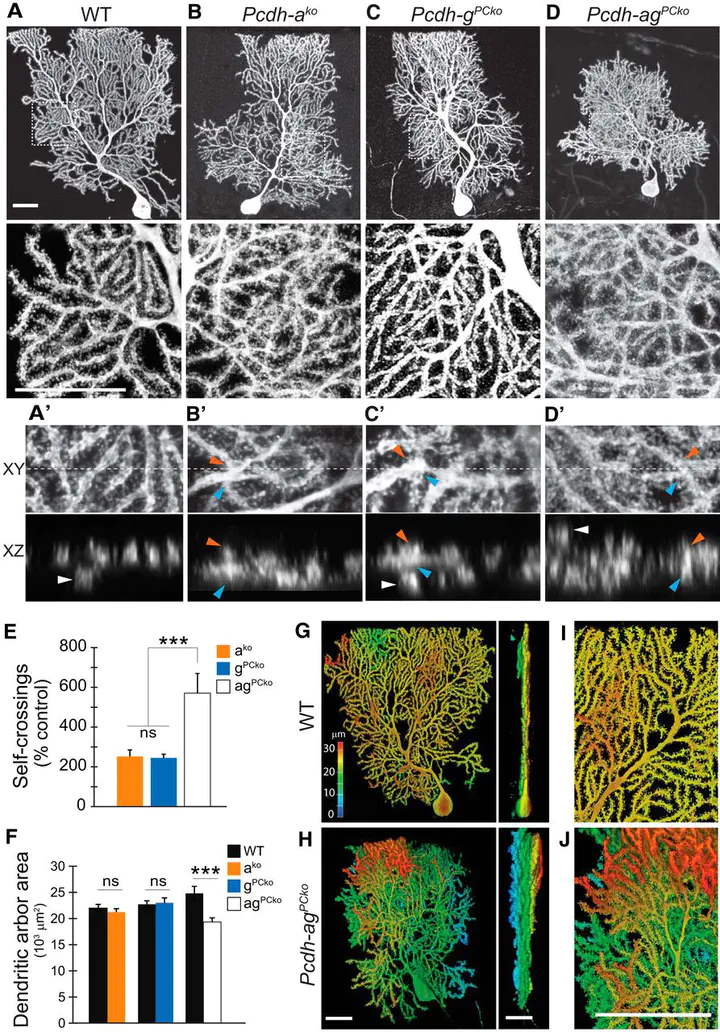Combinatorial effects of alpha-and gamma-protocadherins on neuronal survival and dendritic self-avoidance

Abstract
The clustered protocadherins (Pcdhs) comprise 58 cadherin-related proteins encoded by three tandemly arrayed gene clusters, Pcdh-α, Pcdh-β, and Pcdh-γ (Pcdha, Pcdhb, and Pcdhg, respectively). Pcdh isoforms from different clusters are combinatorially expressed in neurons. They form multimers that interact homophilically and mediate a variety of developmental processes, including neuronal survival, synaptic maintenance, axonal tiling, and dendritic self-avoidance. Most studies have analyzed clusters individually. Here, we assessed functional interactions between Pcdha and Pcdhg clusters. To circumvent neonatal lethality associated with deletion of Pcdhgs, we used Crispr-Cas9 genome editing in mice to combine a constitutive Pcdha mutant allele with a conditional Pcdhg allele. We analyzed roles of Pcdhas and Pcdhgs in the retina and cerebellum from mice (both sexes) lacking one or both clusters. In retina, Pcdhgs are essential for survival of inner retinal neurons and dendritic self-avoidance of starburst amacrine cells, whereas Pcdhas are dispensable for both processes. Deletion of both Pcdha and Pcdhg clusters led to far more dramatic defects in survival and self-avoidance than Pcdhg deletion alone. Comparisons of an allelic series of mutants support the conclusion that Pcdhas and Pcdhgs function together in a dose-dependent and cell-type-specific manner to provide a critical threshold of Pcdh activity. In the cerebellum, Pcdhas and Pcdhgs also cooperate to mediate self-avoidance of Purkinje cell dendrites, with modest but significant defects in either single mutant and dramatic defects in the double mutant. Together, our results demonstrate complex patterns of redundancy between Pcdh clusters and the importance of Pcdh cluster diversity in postnatal CNS development.